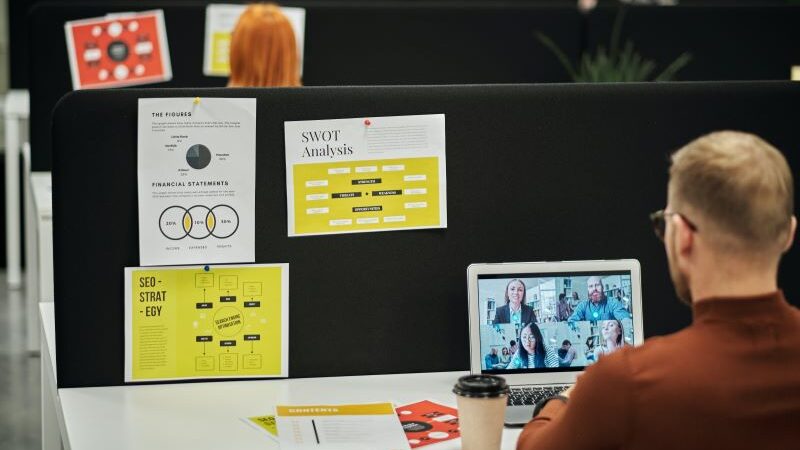Following on from Setsengerel’s recent blog as an Employ.ed on Campus intern at the Careers Service, she now shares some interesting findings relating to hybrid working practice. One strand of Setsengerel’s project was to reintroduce the Employer Survey which the Careers Service had not conducted since 2018.
What did this involve?
As we were going to be reaching out to employers for our biannual survey, we wanted to capture as much information as we could, particularly on the topic of hybrid working practice; this was to help give our students more of an understanding.
What is hybrid working?
Hybrid working is the combination of working remotely and in the office.
Is hybrid working here to stay?
Almost half of the employers (46%) who participated in our survey mentioned they offer hybrid working practice. Working hours and conditions vary according to the type of role, so have a think about which roles you’re interested in. Some job descriptions specify whether they offer flexible/hybrid working. If not, have a look on the employer’s “About us” or careers webpages.
Preferred working pattern/hours are sometimes discussed during the interview process but before you get to that stage, it’s completely fine to contact the employer to find out before you apply for the role.
It’s worth noting that companies with large office space could be encouraging their employees back to the office as they don’t want to pay high rent for unused office space.
Employer Support
Don’t forget to ask your employer what type of equipment support they provide for hybrid working and make sure the roles you are applying for suit your situation. For example, if you don’t have space to work from home, then you might not be able to or if you don’t have the equipment you need, will they provide it?
Most of the employers (71%) we surveyed, will provide you with some sort of IT equipment when you start working. It will most likely be a laptop, mouse, keyboard, headset and phone. However, some employers (5%) responded that they don’t provide any IT equipment.
From our data, we have found that employers equally provide IT support, mental health wellbeing check ins, regular check ins, socialising and networking activities. Large organisations could offer different support to those of Small and medium-sized enterprises (SMEs), so think about what is the best fit for you and the type of environment you would prefer.
Job advertising
The majority of employers, 86%, responded that they do mention working practice in their job advertisement. 86% of employers are also fine with you starting to work hybrid from the start of your contract but the remaining 14% of employers would prefer you to work at least three months in the office; to better understand your new job, workplace culture and build connections with your co-workers.
However, if your chosen career depends on you being in, e.g. a customer facing role or perhaps working in a lab, these roles are most likely be fully in-person. In contrast, a flexible working practice is mainly based on core working hours and how the 9-to-5 workday can be adapted so this type of working practice can also be attractive.
Work expectations
93% of employers responded that they are happy with how recent graduate employees are performing in the workplace but stated there is also room for improvement. Employers also highlighted that recent graduates can struggle with professional communication in the workplace and they tend to use unprofessional language in emails or “ghost” co-workers during work time.
Each workplace will have different rules for messaging on Teams/Zoom, email etiquette and in-person interactions, so it is good to learn these early on.
Thanks Setsengerel.
This handy article on the “Do’s and Don’ts of hybrid working” is worth a read if you’re starting a new hybrid role. (University of Edinburgh login required)
If you would like to find out more about communicating appropriately in the workplace, check out our webpage.
(Image credit: Jack Sparrow on Pexels)


